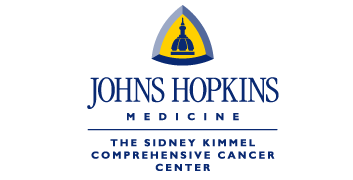- Advertise
- About OncLive
- Editorial Board
- MJH Life Sciences brands
- Contact Us
- Privacy
- Terms & Conditions
- Do Not Sell My Information
2 Clarke Drive
Suite 100
Cranbury, NJ 08512
© 2025 MJH Life Sciences™ and OncLive - Clinical Oncology News, Cancer Expert Insights. All rights reserved.
Dr Ali on Choosing Between CAR T-Cell Therapy and Bispecific Antibodies in R/R Multiple Myeloma
Syed Abbas Ali, MBBS, discusses treatment decisions for patients with R/R myeloma for whom CAR T-cell therapy and bispecific antibodies are both options.
"By and large, for patients who are able to receive CAR T-cell therapy, [oncologists should] go with CAR T-cell therapy first. If you can’t go with CAR T-cell therapy and have to go with another anti-BCMA agent, then [you should] see if there is an alternative."
Syed Abbas Ali, MBBS, an assistant professor of oncology at Johns Hopkins School of Medicine and Sidney Kimmel Comprehensive Cancer Center, discusses factors the influence his choice between CAR T-cell therapy and bispecific antibodies for the treatment of patients with relapsed/refractory multiple myeloma who are eligible for both classes of agents.
Recent studies have examined the efficacy of T-cell–engaging therapies in patients with relapsed/refractory multiple myeloma, particularly those with prior exposure to BCMA-targeted therapies, Ali begins. Both CAR T-cell therapies that are FDA approved for patients with relapsed/refractory multiple myeloma target BCMA, as do most bispecific antibodies, he says. Prior exposure to BCMA-directed agents—including antibody-drug conjugates, CAR T-cell therapy, or bispecific antibodies—may influence the effectiveness of subsequent BCMA-targeted treatments, he notes.
Clinical data suggest that the sequencing of BCMA-targeted therapies is critical, Ali emphasizes. When using CAR T-cell therapy and BCMA-directed bispecific antibodies sequentially, the preferred approach is to administer CAR T-cell therapy first, followed by a BCMA-targeting T-cell engager or bispecific antibody, he states. This sequence generally results in better therapeutic outcomes, according to Ali. Conversely, patients who receive an anti-BCMA therapy before CAR T-cell therapy may experience reduced CAR T-cell efficacy, particularly if they had prolonged or recent exposure to a BCMA-targeted agent, he reports.
To optimize outcomes when sequencing BCMA-directed therapies, a treatment-free interval of at least 3 to 6 months between agentsis advisable, Ali recommends. Additionally, patients who previously had a robust response to an anti-BCMA therapy and subsequently received a non-BCMA therapy before initiating another BCMA-targeted treatment may have a higher likelihood of benefiting from the latter, he explains.
If CAR T-cell therapy is not feasible, alternative treatment strategies should be considered, such as bispecific antibodies in clinical trials or therapies targeting alternative antigens like GPRC5D, he notes. For example, the FDA-approved GPRC5D-targeted bispecific antibody talquetamab-tgvs (Talvey) is available for patients with relapsed/refractory multiple myeloma who have received at least 4 prior lines of therapy. As additional therapies receive regulatory approval, treatment sequencing will become more flexible, allowing oncologists to tailor therapy to individual patient responses and preserve options for future anti-BCMA treatments, he concludes.


